If you are planning a trip to Greece, no doubt you will want to bring your camera along to take advantage of your temporary location. But there’s a big difference between vacation snapshots and professional landscape photography – and often it’s all about the ‘what’, not just the ‘how’.
Here’s a list of some of the key points to photograph in Greece – and how you can get a different view to the average tourist that would be more in line with a portfolio.
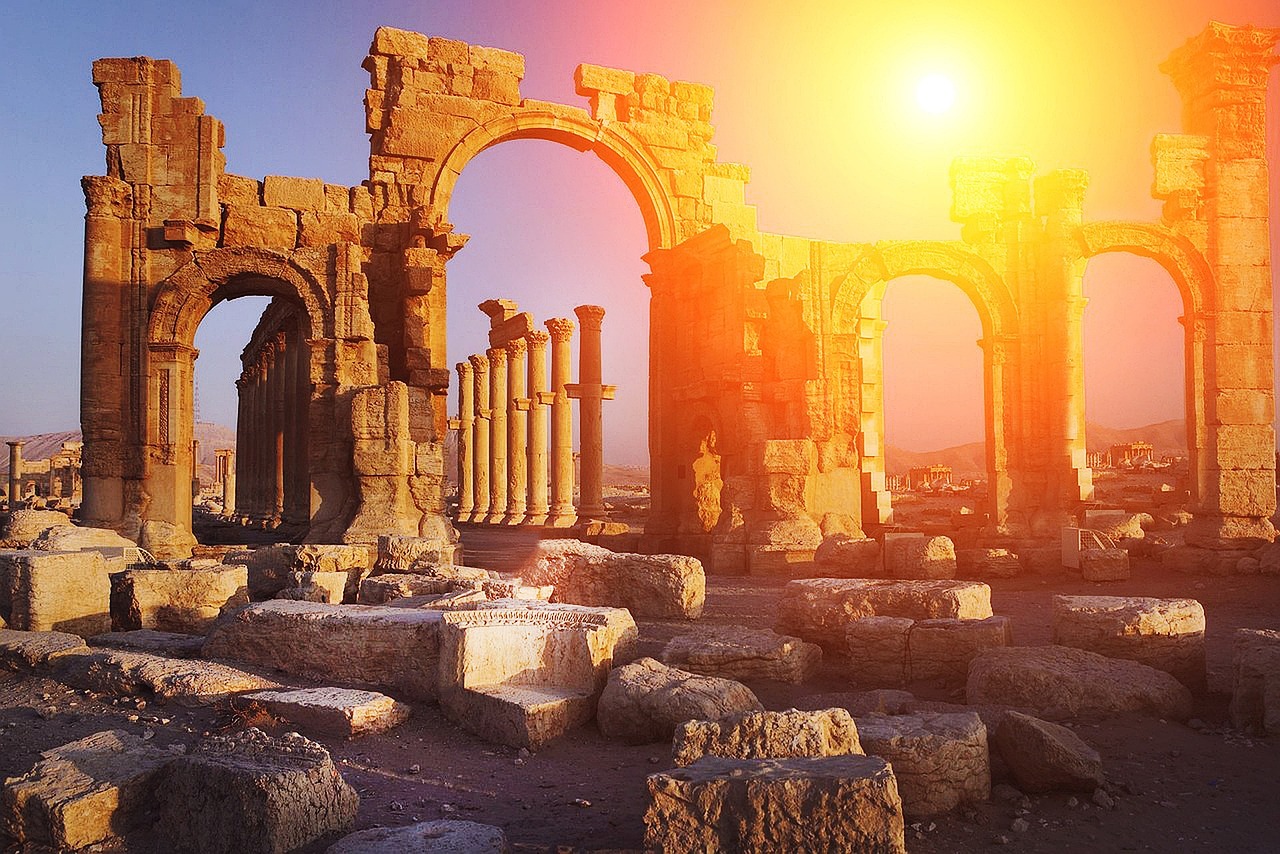
Image by Cari R. | Pixabay License
Thermopylae
Close by to the shore, Mount Kallidromon forces you to go through a small pass which is known as the Thermopylae Pass. You will have heard of it if you have seen the movie 300, or studied ancient history. This is where the Spartans made their last stand against the encroaching Persian army, sacrificing their lives in order to protect Athens.
This historical moment makes Thermopylae a real destination for tourists, but the dramatic landscape makes for a great setting for landscape photography as well. Try to use angles when photographing this location: go up higher on the mountain to photograph down into the pass, or stay low by the shore to capture the vista stretching up into the sky.
Keep following the pass and the road through it in order to discover more natural scenes which are stunning in their own right, even if they don’t have as much history heaped upon them. This area is one of high contrast with the mountain crashing up against the shore, so take advantage of this by emphasising scale in your shots.
Corinth Canal
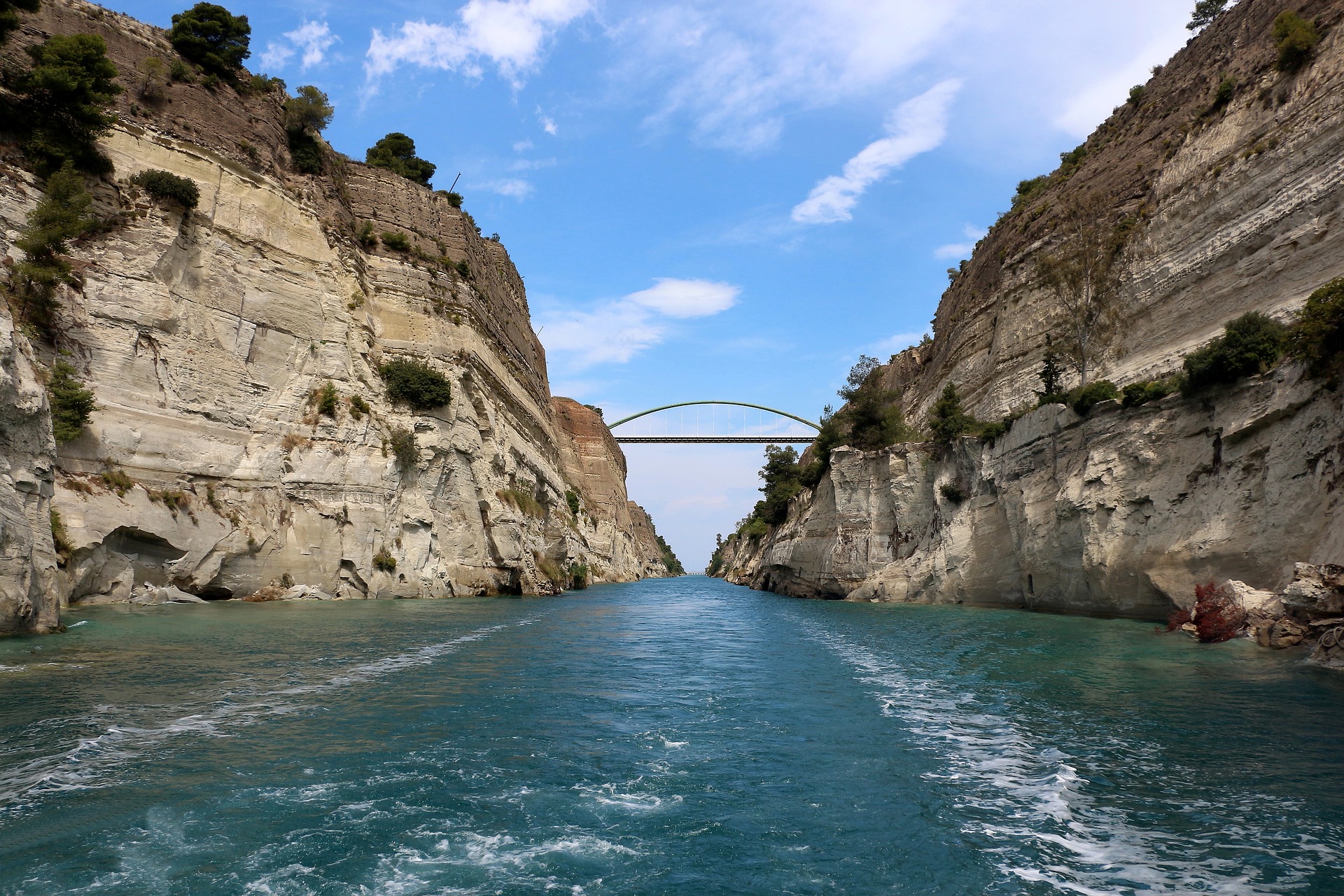
Image by Herbert Aust | Pixabay License
The Corinth Canal is an iconic sight – a manmade slash through rock that allows ships to pass through, some of them seemingly comically large in comparison to the width of the canal. The images of large ships sailing down this slot are seemingly everywhere, so why stick with the obvious? Of course, it’s an arresting sight, but there are other ways to capture the shot.
An aerial view, if you can arrange it, will be just as dramatic – with the straight line of the canal cutting through the land. Or you can get down lower – perhaps photographing the scene from the decks of a ship yourself.
Playing with distance can also work in your favour here. Head down lower and capture the canal stretching out right into the distance. Play with placing the horizon at the top of your photograph or in the middle and see what a difference it makes.
Delphi
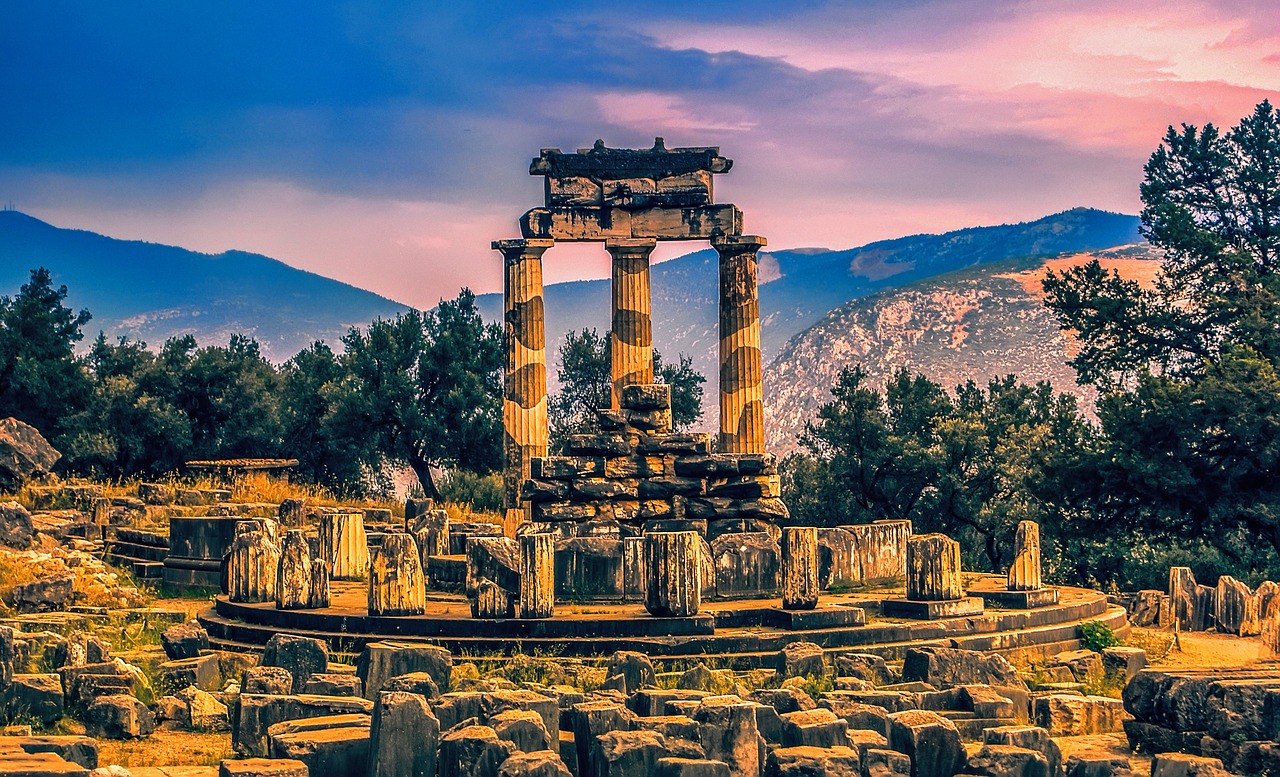
Image by Walkerssk | Pixabay License
The ruins at Delphi were once the home of the Oracle, a mystical figure who would hand down prophecies and predictions from their perch on the mountain. The view here is just as spectacular and breath-taking as it would have been for the Ancient Greeks, who came here seeking fortune or advice.
The rolling slopes of the forested mountains make for an amazing backdrop to the ruined temples, but of course every shot that could possibly be taken here has already been done. While you may find it hard to resist temptation to take a shot that encompasses the majesty of the whole complex, you could also try going in the opposite direction – the macro.
Try framing shots with close-ups of weathered and worn columns on the side – you can create a composite image from two different exposures to retain sharp focus on both the architecture and the landscape. Angle your camera through the arches or stone formations of old temples and see how they were aligned to the surrounding countryside. Get up as high as you can and see it from above – or shoot from below as the very tips of the surviving architectural structures breach your frame.
Limeni
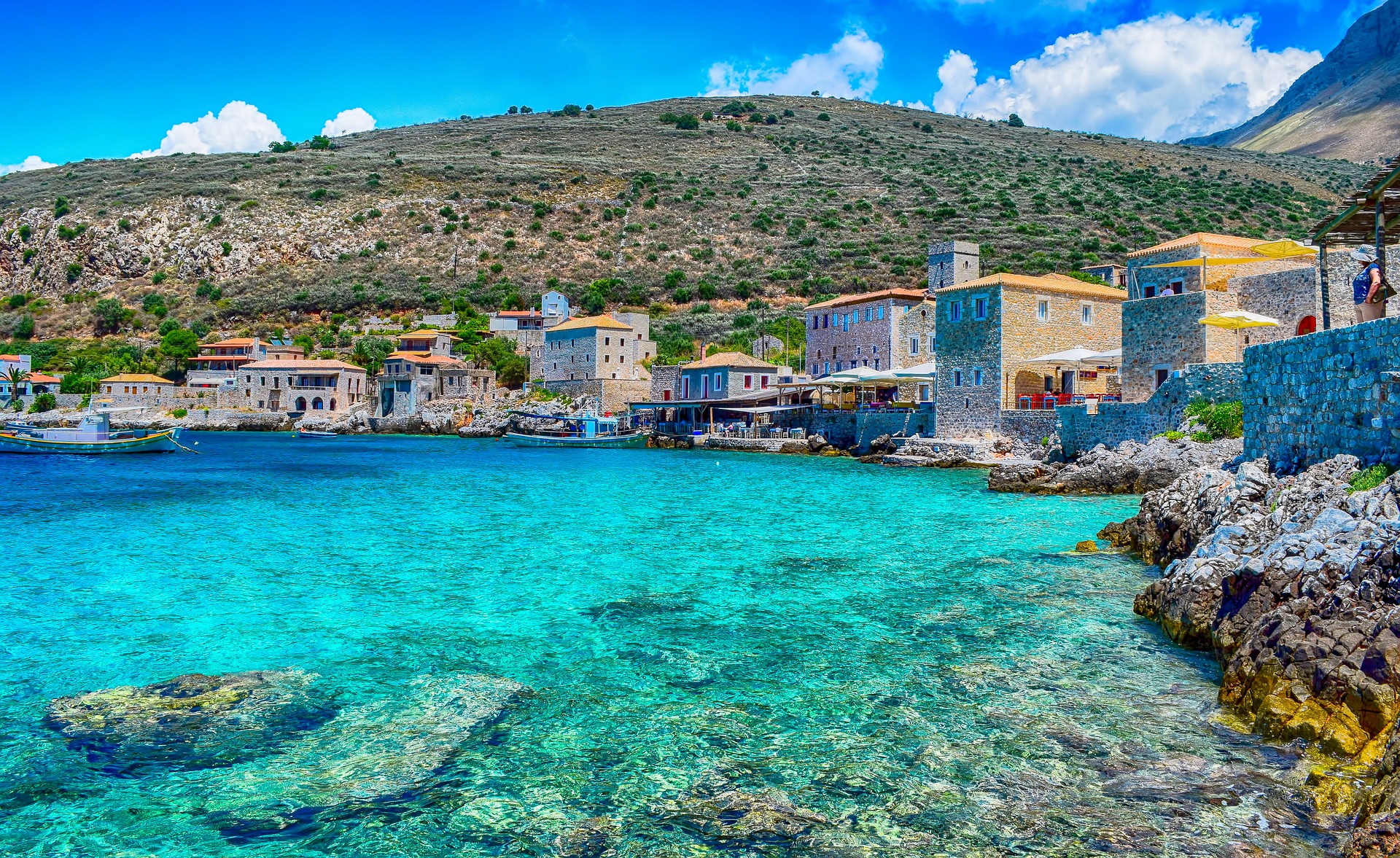
Image by Ioannis Ioannidis | Pixabay License
This small waterside town is faced towards the West, which means it is possible to capture incredible sunsets which reflect on the water and paint the buildings in a pastel mixture of orange, red, and pink. This is a landscape which can be shot both ways: from the land out over the water towards the sun, or with the sun behind you to admire the beautiful cove.
Bringing the human element into play here creates much more dynamic images. Capture the fishermen of the town as they bring in their boats, or tourists standing on the piers to gaze into the setting sun. The buildings are as much a part of the landscape as anything else, with an historic appearance and plenty of quaint charm.
Meteora

Image by Martina Bäcker | Pixabay License
Meteora means ‘the middle of the sky’, and this is where the Greek Orthodox monks chose to build their monasteries. They are nestled on top of sandstone pillars which soar up above the surrounding landscape, creating both natural defences and a necessary isolation – perfect for religious reflection.
There are so many possibilities here. Capturing the monasteries with a wide shot showing their context within the wider landscape works well, and each of them also provides opportunities for a closer frame. Playing with contrasts – such as the juxtaposition of a stone manmade wall with the natural stripes and curves of the windswept cliffs – can be very effective, as can the use of angles. Showing the size of the drop below your feet, or standing below and capturing the height of the columns of sandstone above you, will allow you to create a sense of perspective.
Nafplio

Image by Christian Hardi | Pixabay License
This town has a rich history, and also provides one of the most beautiful vistas across the sea. The seaport was very important during different eras of the past, and is topped with the ruined Palamidi Castle – which happens to form a very excellent vantage point over the rest of the town and the sea below.
There is also the tiny fortification at Bourtzi, located in the middle of the harbour – which happens to hold a shape fairly similar to some of the ships passing by, making for good comparative shots putting the old and the new up against one another. The traditional houses and old-fashioned square are also very photogenic.
Get up onto the fortress before sunset in order to capture the pinks and golds settling over the harbour and the sea, painting everything in lovely shades.
→ Related reading: How to Photograph Iconic Locations Without Being Cliché
Monuments, temples, and statues
There are plenty of these in Greece, from the famous Acropolis to smaller temples and monuments across the country. Many of them date back to Ancient times, and bear the marks of both weather and man’s carelessness from thousands of years of history.
Capturing them as part of a landscape is often challenging, as they are thronged with tourists who may enter your shot. However, there are some general rules of thumb: sunset often works best because of the spectacular colours it can produce in the rock, as well as the fact that more people tend to observe rather than getting into the frame. Travel at off-peak times to reduce the number of visitors you will have to compete with.
If you can’t get the frame as far back as you want without including people, try changing your angle. If they are still in the background, you may have to try some composites which remove visitors from your shots. Try to find your own unique perspective at each place, instead of taking the same shots as everyone else. Could you go closer? Further away? Higher or lower? Can you see an area of contrast or juxtaposition that would work well? What if you use the ruins to frame the landscape, rather than using them as your subject?
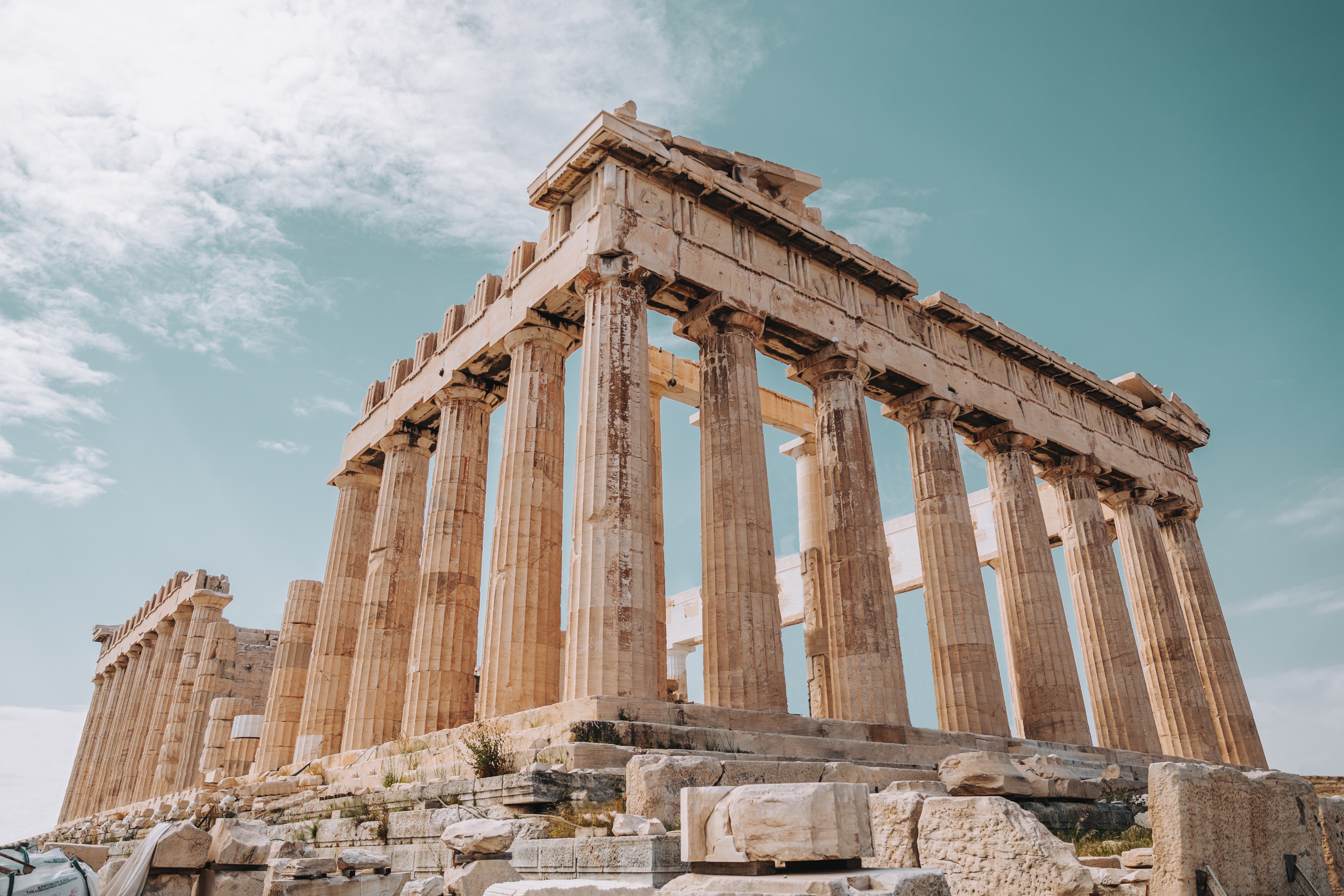
Photo by Spencer Davis | Unsplash License
There are always ways to see a landscape in a new way that has not yet been done before, even if it might seem an impossible task. And while your shot may not be totally unique, so long as it is not the usual well-beaten track that anyone with a camera phone could take, then you’re doing well!
Photo license links: Unsplash License, Pixabay License